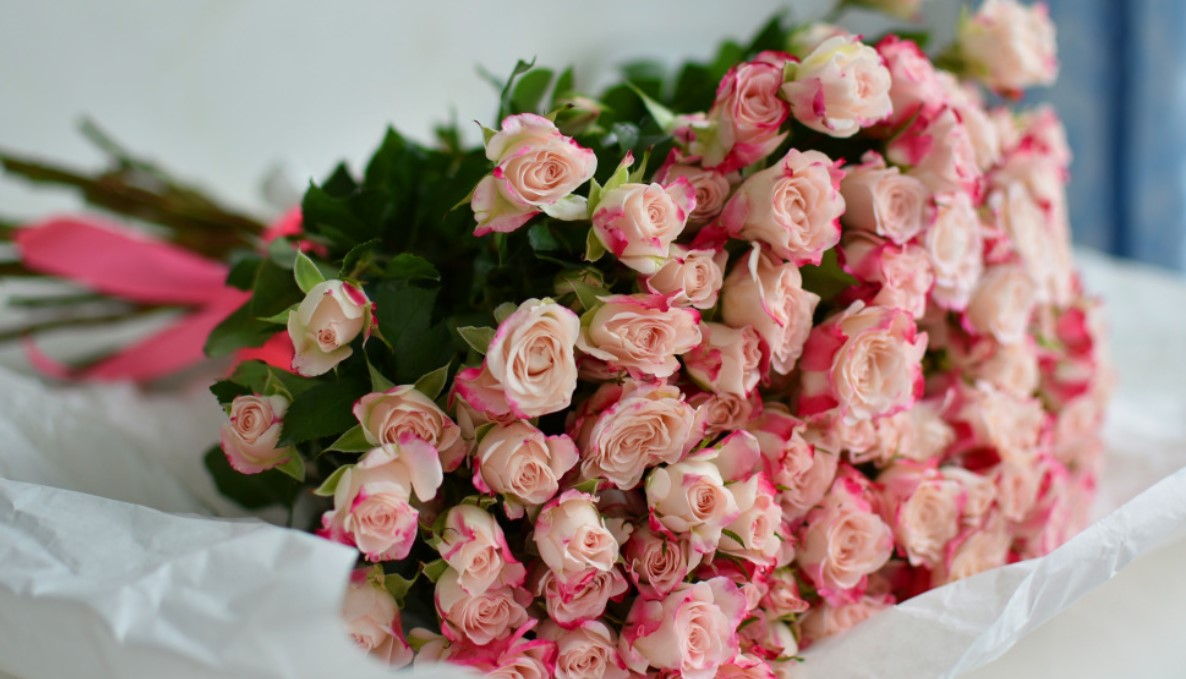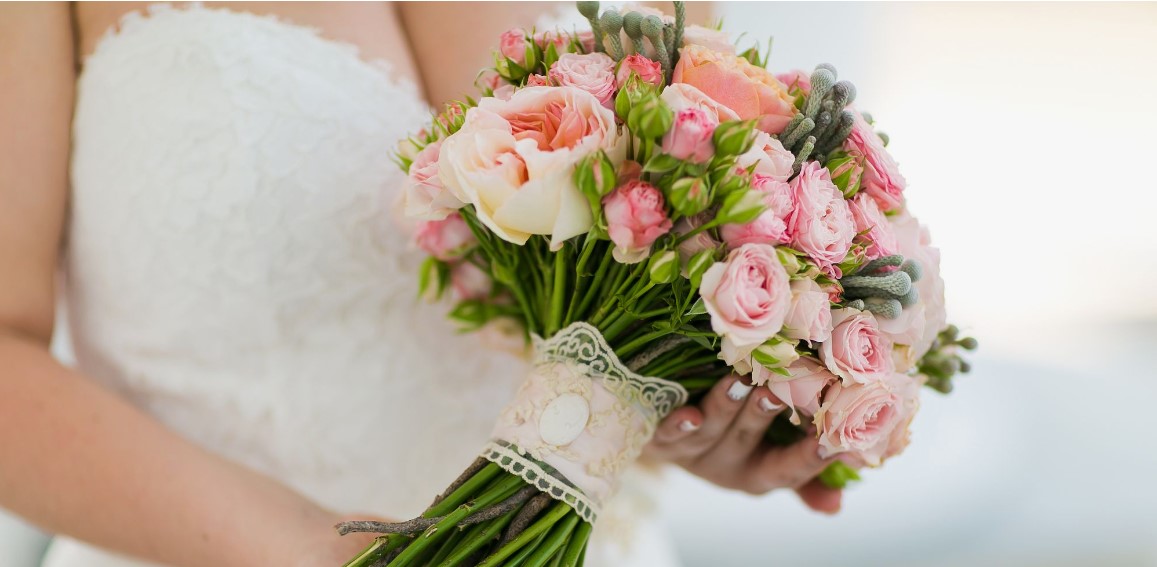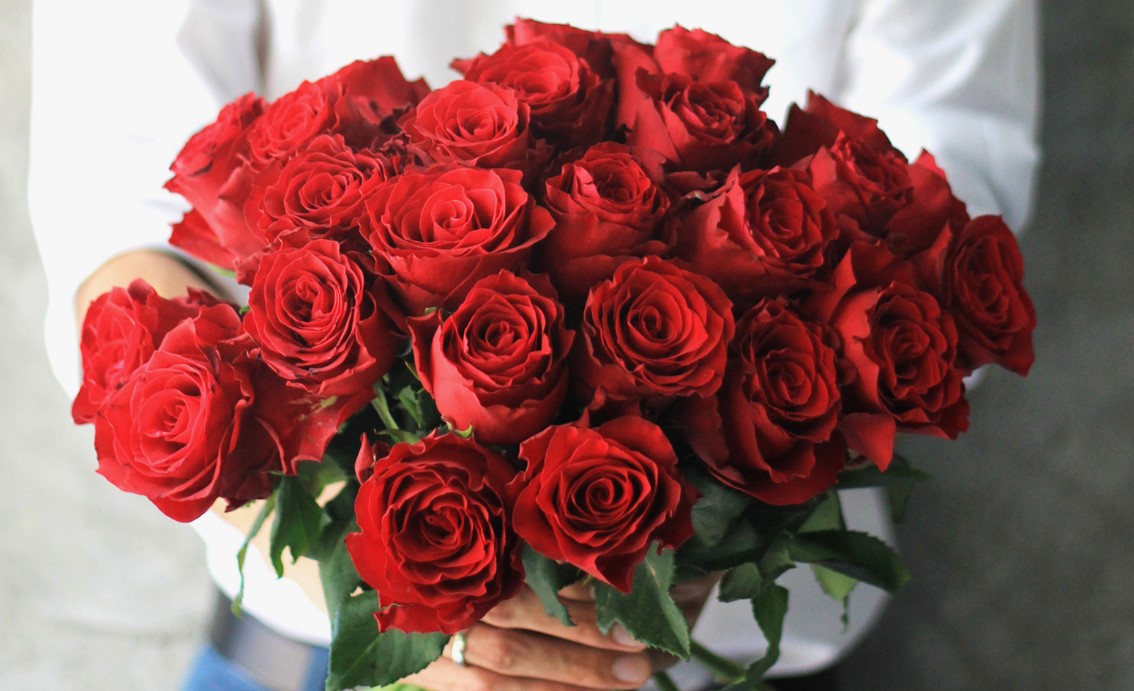To create a harmonious bouquet, understanding and applying the principles of color theory—coloristics—is essential. This scientific approach to color helps ensure that floral compositions, whether crafted at home or by a professional “flower shop,” are visually balanced and aesthetically pleasing. When the color palette is violated, even the most exquisite and exotic flowers from a flower shop can appear out of place or overly flashy. By adhering to the laws of color harmony, you can create bouquets that evoke emotions and elevate the beauty of the flowers.
Four Main Color Combination Approaches in Bouquets
When designing floral arrangements, florists typically rely on four distinct color combination techniques, each offering its own charm and artistic flair. These methods not only help to bring out the individual beauty of the flowers but also ensure that the arrangement looks cohesive.
1. Contrasting Combinations
Contrasting combinations involve pairing colors that stand in stark opposition on the color wheel, creating vibrant and expressive compositions. These contrasts are often softened with less saturated, related shades to avoid overly harsh visuals. For instance, warm colors like reds and oranges can be balanced with soft, pale pinks or yellows. Similarly, cold colors like blues and purples can be blended with lighter shades to create smoother transitions.
While contrast can make a bouquet striking, too much can result in an over-the-top, dissonant design that lacks subtlety. The key to success with contrasting combinations is to ensure that the palette stays within either warm or cool tones, never mixing the two extremes. Properly executed, these arrangements captivate the eye and showcase the dynamic interplay between different colors.

2. Analogous Combinations
Analogous combinations bring together colors that are adjacent on the color wheel, producing a natural and harmonious look. A classic example of an analogous arrangement is a bouquet with red, orange, and peach flowers. These hues flow smoothly into one another, creating a unified and visually pleasing display.
In such combinations, it’s important to establish a tonal hierarchy by choosing a dominant color. This prevents the bouquet from appearing too “bland” or uniform. The use of tonal contrast—where one color takes center stage—ensures the arrangement remains interesting and balanced. Analogous bouquets often have a cohesive, integrated feel, making them perfect for formal events or simple, elegant displays.
3. Monochrome Combinations
Monochrome bouquets are crafted from flowers of the same color, but with varying levels of saturation. Each element in the arrangement is selected to create smooth, seamless color transitions, resulting in a gradient effect. Professional florists often experiment with these combinations, producing gradient bouquets where the contrast lies not in color but in the shape, texture, and size of the flowers used.
This technique allows florists to highlight the subtleties of a single hue while emphasizing the diversity of the flower types. Monochrome bouquets are elegant and sophisticated, relying on the interplay of form and texture to create depth and interest.
4. Polychromatic Combinations
Polychromatic bouquets use a color scheme consisting of three basic colors, complemented by a range of nuanced shades. This method is particularly suited for spring and summer arrangements, where the vibrant colors of fresh blooms and greenery are on full display. A good example of a polychromatic bouquet might include a mix of wildflowers, stalks of grain, and blades of grass, reflecting the natural beauty of the season.
These compositions are lively and full of character, offering a cheerful and dynamic display of colors. When well-balanced, a polychromatic bouquet captures the essence of nature’s diversity without overwhelming the viewer with too many competing shades.
Examples of Flower Combinations in Bouquets
Different types of flowers have unique color characteristics that lend themselves to particular combinations. Knowing which flowers complement one another is crucial for creating a balanced and visually pleasing bouquet.
1. Roses
Roses are incredibly versatile and pair well with many different flowers. For instance, delphiniums, columbines, and daylilies provide a lovely contrast to smaller flowers on low stems. Large pink rosebuds harmonize beautifully with elegant irises, while scarlet roses make a striking pair with tulips. White roses, on the other hand, look graceful when combined with delicate bells and violets. Yellow and orange roses can be accented with doronicum, tansy, and goldenrod, adding warmth to the arrangement.
2. Tulips
As quintessential spring flowers, tulips pair well with mimosas, chrysanthemums, alstroemerias, and even roses. A particularly soft and delicate combination involves white tulips and various blue flowers such as hyacinths or cornflowers, forming a miniature bouquet that feels fresh and tender.
3. Peonies
Known for their lush blooms, peonies are often combined with delicate ranunculus, tea roses, matthiola, and delphinium to create rich and textured bouquets. Because peonies have such voluminous blossoms, it’s best to use minimal decorative greenery, allowing the flowers to stand out without being overshadowed.
4. Sunflowers
The cheerful, sunny nature of sunflowers makes them perfect for vibrant summer compositions. They pair well with daisies, poppies, asters, freesias, and dianthus, creating joyful bouquets that reflect the warmth of the season. Contrasting sunflowers with purple irises or incorporating large green leaves adds depth and dimension to these arrangements.
5. Chrysanthemums
White, yellow, blue, and red chrysanthemums bring a sense of luxury and grandeur to any bouquet. Since chrysanthemums tend to dominate compositions, they are often paired with only one other type of flower, such as irises or lilies. Adding greenery like gypsophila, ferns, or asparagus softens the bouquet and adds texture.
6. Calceolaria and Cyclamens
These two flowers naturally enhance each other’s colors, creating a bold and eye-catching bouquet. For example, the brown shades of calceolaria can deepen into red when paired with vibrant cyclamens, enhancing the overall color intensity.
7. White and Soft Lilac Peonies
For a softer, more romantic arrangement, white and soft lilac peonies can be complemented with rich pinks or deep purples, creating a striking balance between soft pastels and bold accents.

The Expertise of Professional Florists
While it may seem simple, arranging a bouquet that looks balanced and aesthetically pleasing requires knowledge and experience. Professional florists understand the nuances of color theory and have a keen eye for selecting flowers that complement one another in terms of both color and texture. They can expertly craft bouquets that not only look beautiful but also convey a specific mood or emotion.
Creating a harmonious bouquet is about more than just selecting pretty flowers; it’s about understanding the interplay of colors, textures, and forms. Whether you’re working with contrasting, analogous, monochromatic, or polychromatic combinations, a deep understanding of color theory is key to creating floral arrangements that are not only beautiful but also sophisticated and meaningful.
For those looking to craft their own arrangements, it’s always a good idea to consult with experienced florists who can guide you through the process of choosing the right flowers and colors. Their expertise ensures that your bouquet will be a true work of art, perfectly balanced and harmoniously composed.

Football fan, shiba-inu lover, DJ, hand letterer and identity designer. Operating at the fulcrum of modernism and elegance to craft experiences that go beyond design. Let’s chat.
